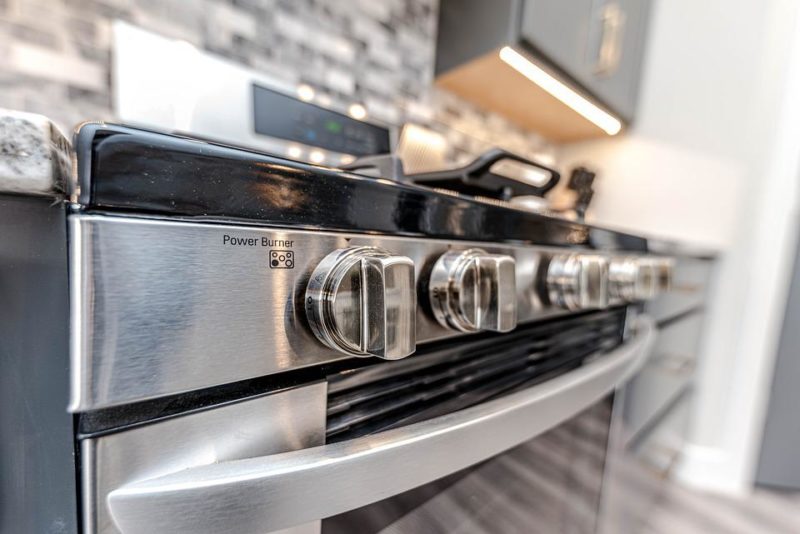Do you have any questions about what does f10 mean on a Kenmore stove? This page will help you understand what f10 stands for. So, without further ado, let’s get this topic started.
This F10 error message on a Kenmore stove indicates that the unit has reached dangerously high temperatures. In layman’s terms, the stove was overheating much above your settings.
When the stove is hooked into its electrical supply, this error can occur at any moment. Overheating can thus occur both while preparing food or during maintenance cycles and even while the stove is not in use. A malfunctioning control board or a broken temperature sensor can generate an F10 error message on a Kenmore stove. You need to learn more about the f10 reasons, so read further.
Tips To Fix The F10 Error On A Kenmore Stove
When the F10 error code appears, disconnect the stove power cable or trip the appropriate breaker switch to reboot the control board. Now, wait a moment, turn back on the electricity and check the stove by warming it. If an error signal continues, your control board has detected a dangerously high temperature or shut off the oven. Disconnect the stove’s power cable, trip your breaker switch again to identify the issue, follow the repair instructions afterward and learn what does f10 mean on a Kenmore Stove.
#1. Visual examination of the stove
Lift the Kenmore stove range door, and check the heating components if damaged, including a break or scorching, using a flashlight. Look for localized scorched patches next to the component prong extending through the rear wall of the Kenmore stove when both bake or broil elements appear to be in good working order. Replace both components if you see charring and damage. If not, carry out a series of multimeter consistency checks.
#2. Calibration of multimeters
Before doing continuity tests with an analog multimeter, ensure it’s calibrated. Squeeze the probe together and turn the knurled adjustment wheel on the side of the device until the meter reaches zero ohms. Using a multimeter will be set to zero by default, but make sure you adjust this to the minor ohms-of-resistance level before proceeding.
#3. Check the stove connections
Uninstall the stove’s back panel to access all the relevant connections. Remove both heating-element cables by undoing the terminal screws. While observing the reading, insert a multimeter probe into the left heating-element wire and the second probe into the right heating-element terminal. This element is OK if the readout is over zero and up to 50 ohms of resistance; if the reading doesn’t move, the element is faulty and must be changed. If one of the baking or broiler elements fails, the second component must work hard to warm the stove, resulting in a temp runaway.
#4. Check the stove sensor
Stove sensors were thermostat instruments that regulate the temperatures of the stove to be within just a few degrees of the temp on the control board. This continuity test verifies that the sensor’s power generation system is shut at room temperature, demonstrating an electrical charge whenever the stove is turned on, and then regulating the stove by switching the electricity in and out to achieve the proper stove temperature.
The sensor is located between prongs of the top cooking element that protrude through the back oven wall. Disconnect the sensor cable connection and detach the back panel. While observing the reading, put a multimeter probe into the left terminal and the second probe into the correct terminal. If the sensor is working correctly, the resistance measurement should be around 1,000 to 1,100 ohms. If a meter reads 2,500 ohms or greater, the sensor is to blame for such a runaway temperature situation and needs to be changed. You may also be interested to know about symptoms of a bad oven temperature sensor.
#5. Inspect your stove control panel
Check your sensor circuit first from the timer to the wire harness by accessing the control board from the rear of the stove. Disconnect the 15-pin connector from the clock temp control circuit, then verify the necessary oven wires for continuity with the multimeter probes. Contact the first violet wire with one probe, then the other violet wires with the further probe. Continue by transferring the first probe to the next violet terminal, checking the remaining circuits, and ensuring all violet terminals have been examined.
A measurement of more than 0 to 50 ohms across all circuits indicates proper continuity. If a measure on any circuits is around 1,000 to 1,100 ohms, there seems to be an issue with the control board. Whereas if measurement on any circuit climbs to 2,500 ohms or above, the wiring harness was defective and must be changed.
It’s A Wrap!
It is excellent for you to learn what does f10 mean on a Kenmore stove. If your stove shows this error, you can now quickly inspect and fix it yourself, but you may call a professional to help you out if you are confused about the repairing. Thank you, friends, for staying with us. You may also want to read about how to install a gas stove and how to make a camp stove.

